#globular clusters
Text
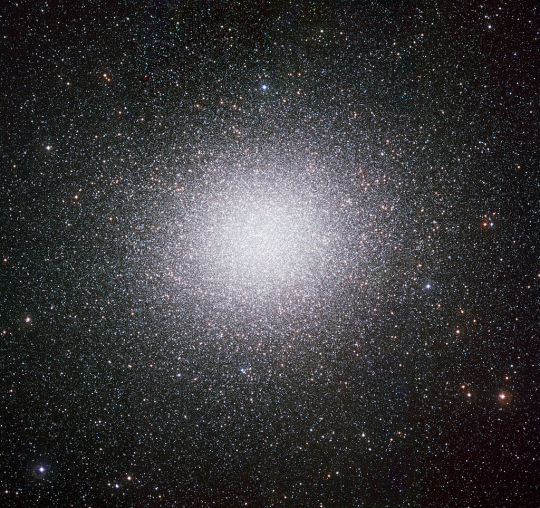
0 notes
Photo

Hubble Space Telescope shows up Webb with a spectacular new photo | Space
Hubble shows a stellar retirement community in a dazzling new light
While the James Webb Space Telescope is already revealing new insights into the deepest recesses of the visible universe, the Hubble Space Telescope is far from obsolete, as a new photo of the Terzan 1 cluster shows.
The photo, released on Oct. 10 by NASA and the European Space Agency (ESA), which jointly run the mission, shows a globular cluster located 22,000 light-years from Earth, revealing a gorgeous palette of different-colored stars in remarkable clarity.
This isn't the Hubble Space Telescope's first photo of the Terzan 1 cluster; NASA released a previous view in 2015. According to an ESA statement, the 2015 photo was taken using Hubble's Wide Field Planetary Camera 2, which operated until 2009. That instrument had a much lower resolution than the observatory's current Wide Field Camera 3, which captured the new image and which astronauts installed during the last Hubble servicing mission. ...
0 notes
Text
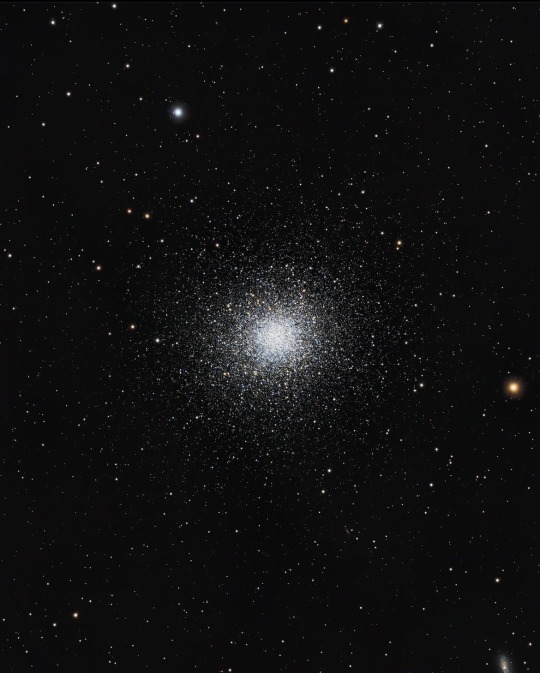

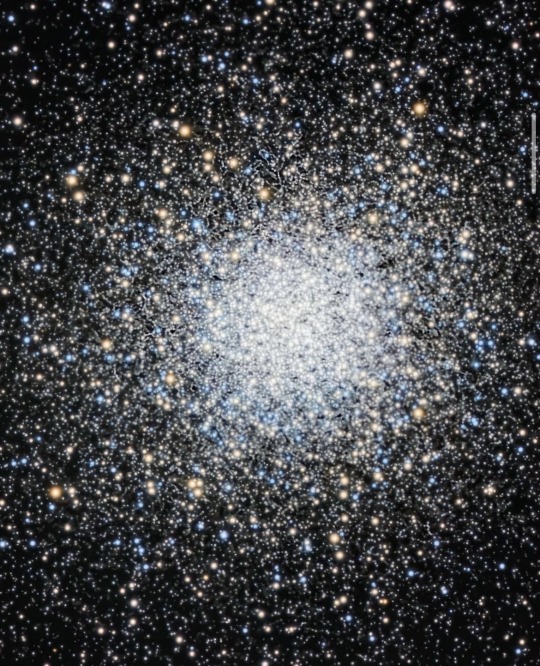
Hercules Globular Cluster M13
Nick Fritz on Instagram
651 notes
·
View notes
Text
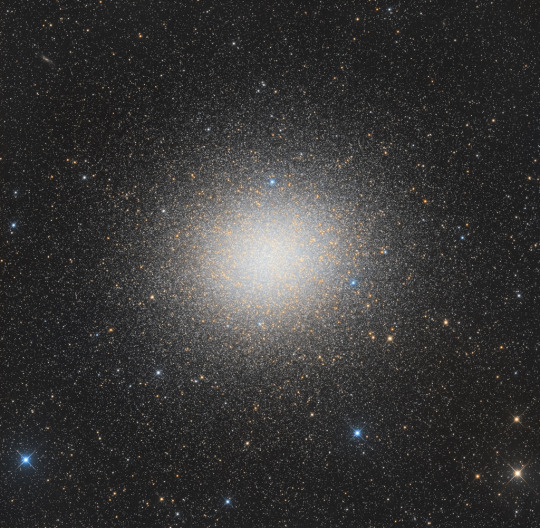
Millions of Stars in Omega Centauri ©
#stars#nasa#apod#globular cluster#star cluster#astrophotography#night sky#solar system#universe#cosmos#astronomy#planet#omega centauri
402 notes
·
View notes
Photo
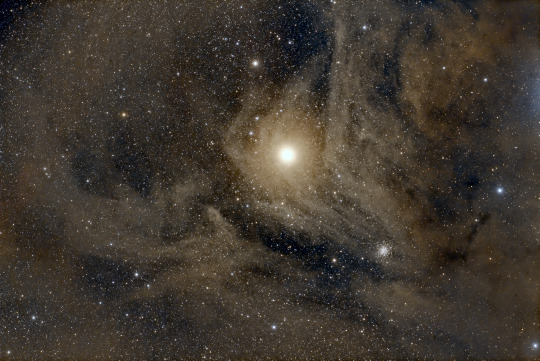
The star Antares (α Scorpii) // Gaillard Jérôme
Note the globular cluster M4 to the lower right!
#astronomy#astrophotography#star#binary star#antares#alpha scorpii#stars#star cluster#globular cluster#messier#messier 4#M4#NGC 6121#scorpius
808 notes
·
View notes
Text
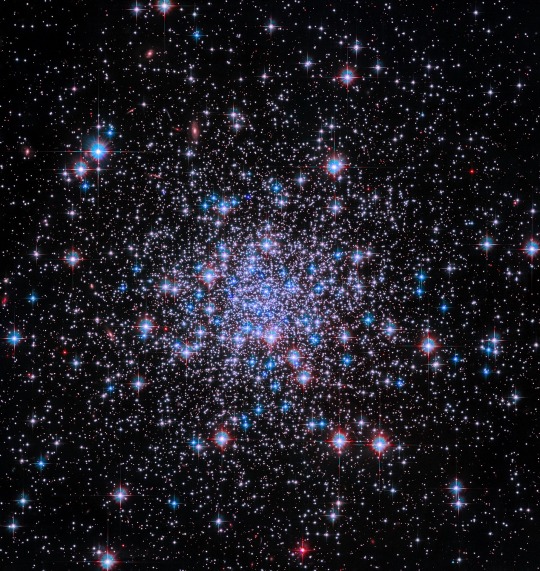
This new NASA Hubble Space Telescope view shows the globular cluster NGC 2298, a sparkling collection of thousands of stars held together by their mutual gravitational attraction. Globular clusters are typically home to populations of older stars, and they mostly reside in the dusty outskirts of galaxies. Scientists utilized the telescope’s unique ability to observe the cosmos across multiple wavelengths of light to study NGC 2298 in ultraviolet, visible, and near-infrared light. This valuable information helps astronomers better understand how globular clusters behave, including their internal movements, orbits, and the evolution of their stars.
Image Credit & Copyright: NASA, ESA, G. Piotto (Universita degli Studi di Padova), and A. Sarajedini (Florida Atlantic University);
#astronomy#space#science#universe#globular cluster#star cluster#cluster#globular#star#Hubble#hubble space telescope#telescope#blue stars#old stars#study#follow#like#reblog#the first star#the first starr#thefirststar#thefirststarr#nasa#apod#tumblr#blog#space blog#hst#galaxy#gravity
156 notes
·
View notes
Text

The densely packed globular cluster NGC 6325 glistens in this image from the NASA/ESA Hubble Space Telescope. This concentrated group of stars lies around 26,000 light-years from Earth in the constellation Ophiuchus.
Image credit: ESA/Hubble & NASA, E. Noyola, R. Cohen
708 notes
·
View notes
Text

Millions of Stars in Omega Centauri - February 21st, 1996.
"Pictured above is the largest ball of stars in our galaxy. About 10 million stars orbit the center of this globular cluster - named Omega Centauri - as this giant globular cluster orbits the center of our galaxy. Evidence indicates that Omega Centauri is by far the most massive of the approximate 160 globular clusters in the Milky Way. The stars in globular clusters are generally older, redder and less massive than our Sun. Studying globular clusters tells us about the history of our galaxy and the age of the Universe."
#nasa#space#cosmos#universe#astronomy#astrophysics#astrophotography#omega centauri#stars#globular cluster
134 notes
·
View notes
Text

"Are you also on your way to the Globular Clusters?" (OC) (My art) ♡
85 notes
·
View notes
Text
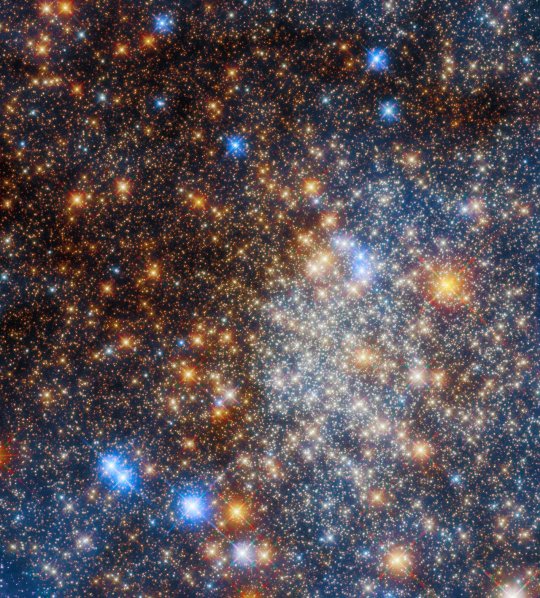
Dusty Cluster
90 notes
·
View notes
Text
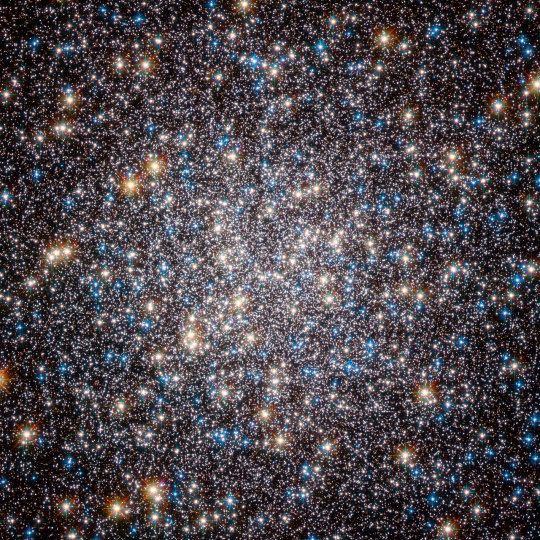
Messier 13, AKA The Great Cluster in Hercules, as seen by Hubble. (Creds: NASA/ESA/Hubble)
73 notes
·
View notes
Video
Hubble Uncovers a Celestial Fossil by NASA's Marshall Space Flight Center
Via Flickr:
This densely populated group of stars is the globular cluster NGC 1841, which is part of the Large Magellanic Cloud (LMC), a satellite galaxy of our Milky Way galaxy that lies about 162,000 light-years away. Satellite galaxies are bound by gravity in orbits around a more massive host galaxy. We typically think of the Andromeda Galaxy as our galaxy’s nearest galactic companion, but it is more accurate to say that Andromeda is the nearest galaxy that is not in orbit around the Milky Way galaxy. In fact, dozens of satellite galaxies orbit our galaxy and they are far closer than Andromeda. The largest and brightest of these is the LMC, which is easily visible to the unaided eye from the southern hemisphere under dark sky conditions away from light pollution. The LMC is home to many globular clusters. These celestial bodies fall somewhere between open clusters – which are much less dense and tightly bound – and small, compact galaxies. Increasingly sophisticated observations reveal the stellar populations and characteristics of globular clusters are varied and complex, and we have yet to fully understand how these tightly packed groups of stars form. However, there are certain consistencies across all globular clusters: they are very stable and hold their shape for a long time, which means they are generally very old and contain large numbers of very old stars. Globular clusters are akin to celestial ‘fossils.’ Just as fossils provide insight into the early development of life on Earth, globular clusters such as NGC 1841 can provide insights into very early star formation in galaxies. Credit: ESA/Hubble & NASA, A. Sarajedini #NASA #NASAGoddard #NASAMarshall #NASAGoddard #HubbleSpaceTelescope #HST #ESA #globularcluster Read more Read more about NASA’s Hubble Space Telescope NASA Media Usage Guidelines
#NASA#Goddard Space Flight Center#GSFC#Solar System & Beyond#ESA#European Space Agency#universe#space#astronomy#Marshall Space Flight Center#MSFC#Hubble Space Telescope#HST#Hubble#globular cluster#NGC 1841#star cluster#globular star cluster#stars#Watch
20 notes
·
View notes
Text

Comet Leonard and Globular Cluster M3
Jonathon Wilcox on Instagram
#shared with permission#stars#astrophotography#space#astronomy#comet#star cluster#globular cluster#comet Leonard#mine#globular cluster M3
152 notes
·
View notes
Text
2024 March 28

Millions of Stars in Omega Centauri
Image Credit & Copyright: Massimo Di Fusco and Mirco Turra
Explanation: Globular star cluster Omega Centauri, also known as NGC 5139, is 15,000 light-years away. The cluster is packed with about 10 million stars much older than the Sun within a volume about 150 light-years in diameter. It's the largest and brightest of 200 or so known globular clusters that roam the halo of our Milky Way galaxy. Though most star clusters consist of stars with the same age and composition, the enigmatic Omega Cen exhibits the presence of different stellar populations with a spread of ages and chemical abundances. In fact, Omega Cen may be the remnant core of a small galaxy merging with the Milky Way. With a yellowish hue, Omega Centauri's red giant stars are easy to pick out in this sharp, color telescopic view.
#astronaut#astronomers#not astrology#star#stars#art#astronomy#outer space#space#artist#galaxy#NGC 5139#NGC#Omega Centauri#cluster#star cluster#globular cluster#sun#milky way#milky way galaxy#telescope#omega cen
23 notes
·
View notes
Text

NGC 2808 // Roger Bertuli
197 notes
·
View notes
Text

I just found this on my laptop from years ago and I couldn't not post it.
Globular cluster
#Sept 2020#Matt Bellamy#Matt from Muse#Muse socials#matt's insta#globular cluster#muse band#muse#2020
67 notes
·
View notes
